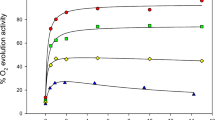Summary
In the course of Mg-dependent ATP splitting by heart actomyosin, an “energy rich” actomyosin-ADP complex is formed, which promotes the incorporation of phosphate32P into ATP in myofibrils. The rate of this ATP-phosphate exchange reaction depends on the extent of actin-myosin overlap which can be decreased by stretching glycerinated muscle fibres. In heart muscle, the calcium-ion dependence of this reaction is similar to that of the actomyosin ATPase, the tension, and “immediate fibre stiffness” (which is “hookean” and which is a measure for the number of myosin cross-bridges attached to and interacting with actin).
These findings suggest that calcium increases the amount of “contractile” actomyosin-ADP complexes. The proportionality between tension and ATPase activity further suggests that the rate-limiting step of the cross-bridge cycle (which determines the molecular turnover number, the “Wechselzahl” of the ATPase) is only little affected by calcium ions. These ions act by recruiting more bridges rather than by accelerating their reactions.
In addition, the depressing effect of inorganic phosphate on the contractile tension and its presumable role in energetic insufficiency will be discussed.
Zusammenfassung
Im Verlauf der Mg-aktivierten ATPase-Reaktion des Herzaktomyosins wird ein “energiereicher” Aktomyosin-ADP-Komplex gebildet, durch den die Inkorporation von32P-Phosphat in ATP begünstigt wird. Die Rate dieser ATP-Phosphat-Austauschreaktion ist abhängig vom Gradder Aktin-Myosin-Überlappung Im Herzmuskel ist die Ca++-Abhängigkeit dieser Reaktion ähnlich derjenigen der Aktomyosin-ATPase-Aktivität, der kontraktilen Spannung und der “immediate fibre stiffness”, die nachHuxley undSimmons (6) ein Maß für die Anzahl der zu jedem Moment angehefteten Querbrücken darstellt.
Die Ergebnisse weisen darauf hin, daß Calciumionen die Konzentration des “kontraktilen” Aktomyosin-ADP-Komplexes erhöhen. Die Proportionalität zwischen Spannung und ATPase-Aktivität ist ferner ein Indiz dafür, daß der ratenlimitierende Schritt des Querbrückenzyklus (der die Wechselzahl der kontraktilen ATPase bestimmt), nur wenig durch Ca++-Ionen beeinflußt wird. Calcium bewirkt eher eine Rekrutierung von Querbrücken als eine Beschleunigung ihrer Reaktion.
Zusätzlich wird der hemmende Effekt von anorganischem Phosphat auf die kontraktile Spannung im Zusammenhang mit der Entstehung der energetischen Insuffizienz diskutiert.
Similar content being viewed by others
References
Fleckenstein, A., H. J. Döring, J. Janker, Y. K. Byon: Basic actions of ions and drugs on myocardial high-energy phosphate metabolism and contractility. In: Handbook of experimental pharmacology, New Series, Vol. XVI/3, Ed.:J. Schmier, O. Eichler (Berlin-Heidelberg-New York 1975).
Gillis, J. M., G. Maréchal: The incorporation of radioactive phosphate into ATP in glycerinated fibres stretched or released during contraction. J. Mechanochemistry Cell Motility3, 55 (1974).
Herzig, J. W.: Do calcium ions affect the kinetics of cross-bridge movement in heart muscle? Pflügers Arch. Europ. J. Physiol.343, R23 (1973).
Herzig, J. W.: Mode of stretch activation in heart muscle. Pflügers Arch. Eur. J. Physiol.355, R13 (1975).
Herzig, J. W., J. C. Rüegg: Myocardial cross-bridge activity and its regulation by Ca++, phosphate and stretch. In press.
Huxley, A. F., R. M. Simmons: Proposed mechanism of force generation in striated muscle. Nature233, 533 (1971).
Huxley, A. F.: Review Lecture: Muscular contraction. J. Physiol.243, 1 (1974).
Levy, R. M., Y. Umazume, M. J. Kushmerick: Ca++ dependence of tension and ADP production in segments of chemically skinned muscle fibres. Biochem. Biophys. Acta430, 352 (1976).
Lochner, W. E., E. R. Müller-Ruchholtz: Die energiereichen Substrate in Myokard bei Perfusion und Persufflation. In: Herzinsuffizienz, Pathophysiologie und Klinik. Ed.:H. Reindell, J. Keul undE. Doll (Stuttgart 1968).
Mannherz, H. G.: On the reversibility of the biochemical reactions of muscular contraction during the absorption of negative work. FEBS-Letters10, 233 (1970).
Morgan, M., S. V. Perry, J. Ottaway: Myosin light-chain phosphatase. Biochem. J.157, 687 (1976).
Portzehl, H., D. C. Caldwell, J. C. Rüegg: The dependence of contraction and relaxation of muscle fibres from the crab Maia squinado on the internal concentration of free calcium ions. Biochem. Biophys. Acta79, 581 (1964).
Reiermann, H. J., J. C. Rüegg: Is the energy transformation in cardiac muscle reversible? Pflügers Arch. Europ. J. Physiol.362, R4 (1976).
Schildberg, F. W., A. Fleckenstein: Die Bedeutung der extracellulären Calciumkonzentration für die Spaltung von energiereichem Phosphat in ruhendem und tätigem Myokardgewebe. Pflügers Arch.283 137 (1965).
Sonnenblick, E. H.: Series elastic and contractile elements in heart muscle: changes in muscle length. Amer. J. Physiol.207, 1330 (1964).
Ulbrich, M., J. C. Rüegg: Is the chemomechanical energy transformation reversible? Pflügers Arch.363, 219 (1976).
Author information
Authors and Affiliations
Additional information
With 3 figures and 1 table
Supported by the Deutsche Forschungsgemeinschaft SFB 90.
Rights and permissions
About this article
Cite this article
Reiermann, H.J., Herzig, J.W. & Rüegg, J.C. Ca++ activation of ATPase activity, ATP-P1 exchange, and tension in briefly glycerinated heart muscle. Basic Res Cardiol 72, 133–139 (1977). https://doi.org/10.1007/BF01906351
Issue Date:
DOI: https://doi.org/10.1007/BF01906351




